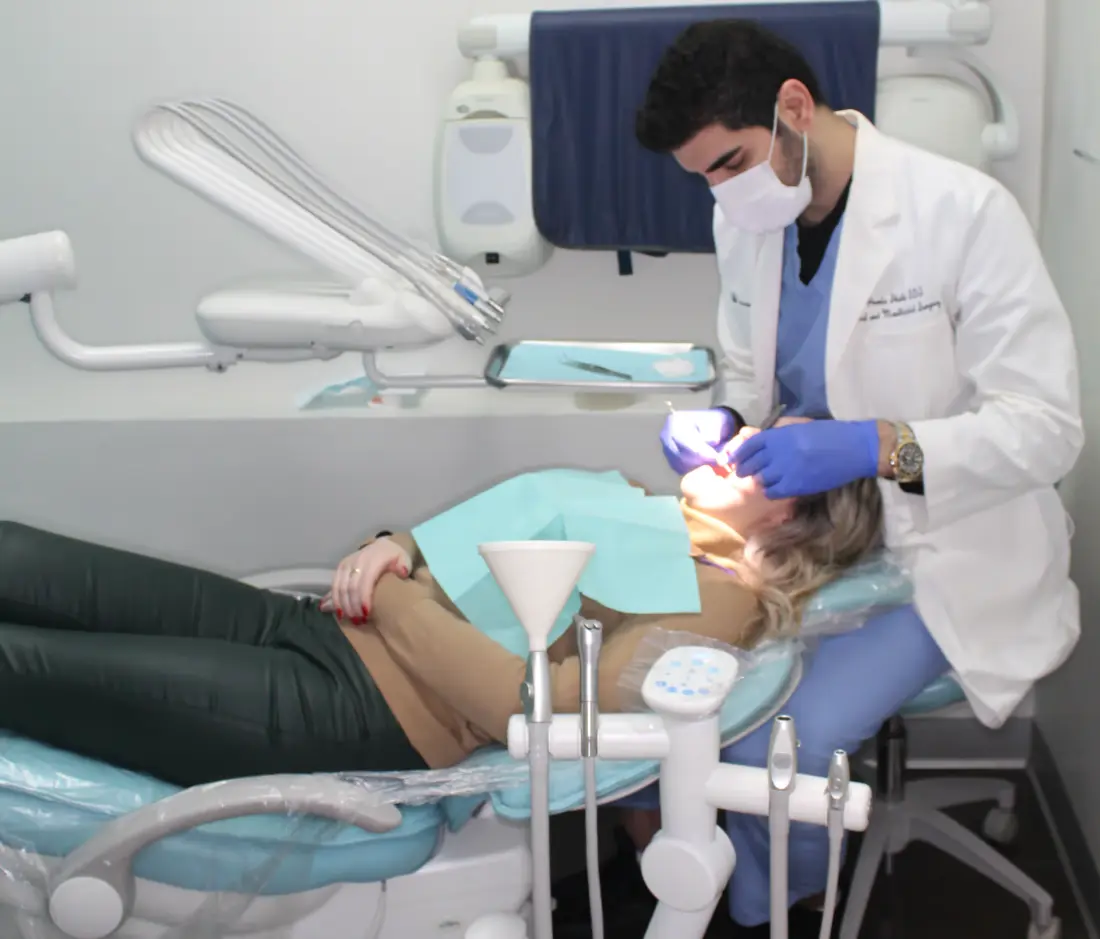Orthodontic Treatment Phases

Misaligned teeth are not only destructive to a person’s self-esteem, but also negatively affect the speaking, chewing, and biting functionality of the jaw. Orthodontic treatment is used to correct misaligned teeth and is highly successful and predictable.
Orthodontic treatments usually include two or three distinct phases depending on the severity of the malocclusion, or bad bite.
Common types of irregularities that can be treated with orthodontics include:
- Crossbite - When some upper teeth close inside the bottom teeth rather than on the outside
- Overbite - When the upper teeth protrude over or completely cover the lower teeth
- Underbite - When the lower teeth protrude over the upper teeth, making the chin look prominent
- Overcrowding - When insufficient space on the arch results in adult teeth erupting incorrectly and becoming rotated
Orthodontic Treatment Phases
Treatment time depends on what malocclusion is being corrected, but typically, orthodontic treatment will take between six and thirty months to complete. The types of dental devices used and the outlook of the patient may also affect treatment time.
There are three common stages of orthodontic treatment. These are the planning stage, the active phase, and the retention phase. To start, let’s look at the planning stage:
Phase 1 – The Planning Stage
During this stage, the orthodontist in Brooklyn will make an informed diagnosis and determine the most effective and expedient way to treat the problem. There are many forms of evaluation the orthodontist might make, such as the following:
- Panoramic X-rays - X-rays allow the orthodontist to see the position of each tooth, their roots, and any potential complications or damage to the jaw joints
- Study model (bite impressions/castings) - Molds of the mouth can be made by having the patient bite down into a dental tray filled with a gel substance. This hardens around the teeth, creating an accurate impression. Orthodontists can use this impression to see the exact position of each tooth and how they affect each other
- Computer-generated images - These are used to help the orthodontist examine how certain treatment plans may affect the symmetry of the face and jaw
- Photographs - Orthodontists may take “before, during, and after” photographs of the face and teeth. These are used to assess how the chosen treatment is progressing and whether it is impacting the face shape of the patient
- Medical and dental evaluations - All medical and dental issues must be completely under control before orthodontic treatment can begin. The orthodontist will discuss health issues with the patient and do a routine oral health evaluation
Phase 2 – The Active Phase
Once all diagnosis has been made, the orthodontist will develop a treatment plan suited to the patient’s unique situation. The orthodontist will recommend orthodontic devices that will move the teeth gently into their proper alignment over time.
Orthodontic devices may be fixed or removable. The most common type of device is traditional fixed braces. These are affixed to either the outside or inside (tongue side) of the teeth and use dental brackets connected to an archwire to put continuous pressure on the teeth.
As an alternative to fixed braces, removable devices include headgear, facemasks, and the Invisalign system. These can be put on and taken off but must be worn for a specific number of hours each day.
No matter what device and treatment plan is chosen for the patient, the patient must schedule regular visits to the orthodontist to have their device adjusted to ensure that the teeth are being moved properly. The patient should visit the orthodontist if the device becomes damaged or breaks, as well.
Phase 3: The Retention Phase
At this point, traditional braces and removable orthodontic devices are removed and replaced with a retainer. The retainer’s job is to keep the teeth from shifting back to their original positions.
Retainers can be taken out but must be worn for a specific amount of time each day during this phase. At this time, the jawbone will reform around the realigned teeth, fully stabilizing them in their correct alignment.
To express any questions or concerns about orthodontic treatments, or to set up an orthodontic consultation, please contact us. Our Brooklyn Dentist, Dr. Shahin, treats patients in Fort Greene, Park Slope, Brooklyn Heights, Crown Heights, and other parts of the borough.